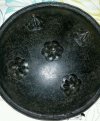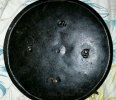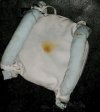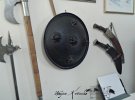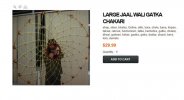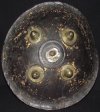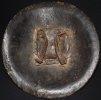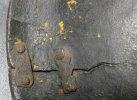- Joined
- Jun 24, 2013
- Messages
- 4,162
What do we have here?
http://media.indiatimes.in/media/facebook/2015/Apr/asdu_fb_1429855748_1429855761_600x315.jpg
Source: http://m.indiatimes.com/culture/who...etes-200-years-in-the-indian-army-232120.html
Being in India at the moment I came across a few pictures which show Indian Gurkhas with medieval buckler type shields in addition to their Kukris. The ones I've seen display the symbols of their units and come in different colors.
Is this a traditional equipment?
How is it called?
Do Nepali Gurkhas have these too?
Is it maybe only for man on man training drills?
Would they carry it into battle even today?
Does this change the Berserker style image which we seem to have of Gurkhas charging violently without regards for their own health and life?
If it all checks out, where can we get one, maybe even with our beloved HI symbol on it? :-D
https://i.ytimg.com/vi/dB6b-8DpEAs/hqdefault.jpg
Source:https://m.youtube.com/watch?v=dB6b-8DpEAs
https://s-media-cache-ak0.pinimg.com/564x/18/cc/fd/18ccfd7af93c1f9ae675344f4f94d219.jpg
Source: https://www.pinterest.com/pin/420805158905675557/
http://media.indiatimes.in/media/facebook/2015/Apr/asdu_fb_1429855748_1429855761_600x315.jpg
Source: http://m.indiatimes.com/culture/who...etes-200-years-in-the-indian-army-232120.html
Being in India at the moment I came across a few pictures which show Indian Gurkhas with medieval buckler type shields in addition to their Kukris. The ones I've seen display the symbols of their units and come in different colors.
Is this a traditional equipment?
How is it called?
Do Nepali Gurkhas have these too?
Is it maybe only for man on man training drills?
Would they carry it into battle even today?
Does this change the Berserker style image which we seem to have of Gurkhas charging violently without regards for their own health and life?
If it all checks out, where can we get one, maybe even with our beloved HI symbol on it? :-D
https://i.ytimg.com/vi/dB6b-8DpEAs/hqdefault.jpg
Source:https://m.youtube.com/watch?v=dB6b-8DpEAs
https://s-media-cache-ak0.pinimg.com/564x/18/cc/fd/18ccfd7af93c1f9ae675344f4f94d219.jpg
Source: https://www.pinterest.com/pin/420805158905675557/
Last edited:


